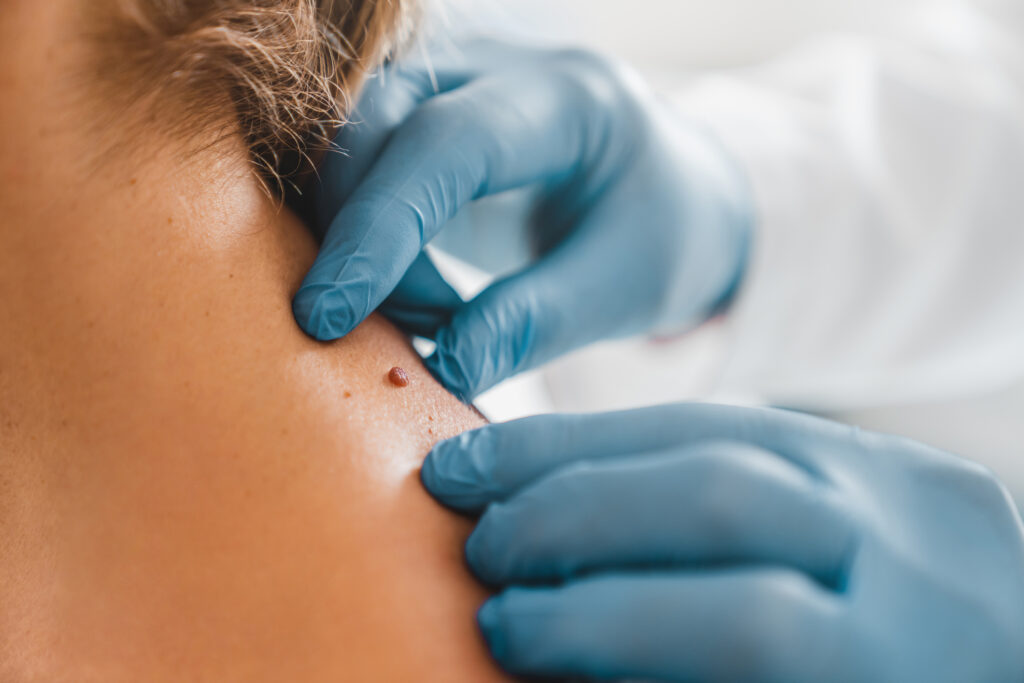Is it a Mole or Something More?

Do you have any moles? They’re a very common type of skin growth, and people typically have between 10 and 40 of them by the time they’re 50 years old. Usually, a mole is just a harmless overgrowth of pigment-producing skin cells. Normal moles can be flat or raised and can range in color from pink to black to brown. Moles can even go through changes, getting larger, darker, or more prominent due to the hormones of adolescence, or pregnancy. Sometimes, however, moles can develop into the aggressive form of skin cancer known as melanoma. How can you tell whether or not your mole is something that should concern you? Here’s how to spot the difference between a harmless mole and one that warrants further attention.
One way to determine the status of a mole is to use the ABCDE method. The way to do this is by first getting familiar with your moles so that you know what’s normal for you. Then, check your moles for any of the following characteristics.
- Asymmetry: Is one half of your mole, unlike the other half? A normal mole is usually round or oval.
- Borders: Does your mole have notched, irregular, or scalloped borders? Moles typically have smooth edges.
- Colors: Does your mole seem to have a lot of different colors? Has it changed color or is the color uneven? Moles are usually pink, brown, or black, depending on your skin tone.
- Diameter: Is your mole larger than ¼ inch across? Has it grown?
- Evolution: Have there been any changes in size, shape, color, or height? Has your mole begun exhibiting new signs or symptoms, like itchiness or bleeding?
It’s smart to examine your skin regularly for changes.
- Perform a self-exam monthly. Stand in front of a full-length mirror, in a well-lit room, after your bath or shower. Look at your moles carefully, so that you can be aware of any changes and quickly identify any abnormal growths.
- Have an in-office exam every year. An annual skin cancer screening is a good way to catch any problems early. Your doctor will know exactly what to look for and where to look for it, even in places that don’t receive sun exposure. If there is any sign of a mole that could indicate skin cancer, your doctor can identify it and treat it early for the best possible outcome.
When you need help caring for your skin, contact Swinyer-Woseth Dermatology to schedule a consultation. We’re committed to providing superior, professional skincare in a manner that’s practical, efficient, and compassionate. With over 30 years of experience providing dermatological services in Salt Lake City, we provide a variety of services, from cosmetic skincare to treatment for skin cancer. Our team of board-certified dermatologists and licensed cosmetic service providers are here to provide you with the care you need in a comfortable, professional atmosphere. Call (801) 682-4715 or contact us through our website.
